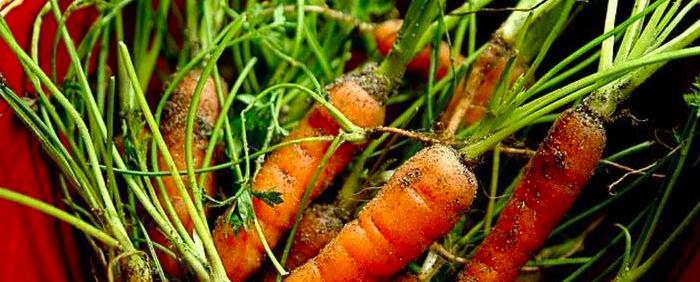
Control the pests, keep the plants out of the cold and learn the secrets of the pros to grow the best vegetables in your neighborhood.
Pack the stems
Before starting a tomato, pepper or eggplant plant, wrap each stem with a 4 inch square aluminum foil collar. Do not put the collar too tight to allow the stem to grow as desired. Plant the seedlings with 2 inches of aluminum foil underneath and 2 inches above so the caterpillars will not be able to penetrate this homemade armor.
Make stoves for the night
If we announce a very cold night ahead, drop very early in the morning, on the side of your plants, something that will absorb the heat throughout the day. This object will release its accumulated heat at night. The object can be quite big, like flat stones or ceramic tiles remaining from the renovation of your bathroom. Another solution is to fold coat hangers into a ring-shaped brooch, install them over the plants and hang black garbage bags for the night.
Protect your corn with mineral oil
Protect the ears of insects by applying mineral oil. Apply the oil only after a few strands of silk have started to dry and repeat the operation for a few days while the plant is growing. If you start the application earlier, the grains will not grow completely. And what to do to get rid of birds? Prevent them from pecking your corn by enclosing the ears in paper bags and tying the bags with string.
Keep root vegetables straight with a hose
To avoid duplication or twisting of horseradish, carrots and parsnips, they should be grown in PVC pipe sections placed vertically in the soil. Fill the pipes with rich earth and humus. When you harvest the vegetables in the fall, you will be surprised at how thick and straight they are.
Hang a bag of mothballs
Rodents and insects hate mothballs, also known as mothballs. So you could think of depositing these scented balls in your vegetable garden. Do not let them touch the ground, otherwise the chemicals in the mothballs could contaminate it. If you think it’s all about putting these little balls on a lid or on a tile in the garden, think again. The wind and the animals walking in your garden will make them fall almost immediately. For safety reasons, it is better to put a few mothballs in a small mesh bag and hang it on a pole or trellis.
Grow onions through newspaper
The onion stalks cast a very thin shadow, leaving the sun to grow the weed all around. A carpet of newspaper will prevent hatching. In early spring, wet the soil where you plan to plant the onions. Then spread 3 or 4 sections of newspaper on the chosen area, basting each section. Using one or two fingers, punch the paper every 5 or 6 inches and place an onion plane in each hole. Place firm, moist soil around each plant and cover the log mat with shredded tree leaves and cut grass. The weed will have no chance to grow and you will have healthy onions.
Use sun boxes for your vegetable seedlings
Do you start your planting indoors near a normally sunny window, but the spring sun refuses to cooperate? Here is a little tip to help you. To maximize the sun’s rays, use aluminum foil boxes. Cut out one side of a cardboard box and line the other 3 “inner walls” with aluminum foil. If you place the boxes facing outside, the sun will reflect on your vegetable plants. Plants will not only be sunnier, but their stems will grow straighter instead of leaning toward the light.
A tire tower for your potatoes
Increase your potato production with a stack of tires. Fill a tire with soil and plant 2 seed potatoes about 2 inches deep. Once the potatoes have grown 6 to 10 inches of foliage, place a second tire on the first, fill it with soil and leave 3-4 inches of exposed foliage. Repeat the process again, and your three-tire ride will triple your crop. The potatoes will germinate on the underground stems and the larger the stems, the more the number of delicious tubers will be.
Grow your own loofah
The loofah, or loofah (Luffa cylindrica) is a purely practical choice for gardeners. It is mainly grown for its dried pulp, which is known for its exfoliating properties, such as sponges of the same name. Simply plant and grow loofah as indicated on the seed packet. On the other hand, if you live in a climate with a growing season shorter than 7 months, you will need to start growing indoors.
When a squash becomes less heavy and its skin begins to brown, peel it. Wet it properly and shatter the seeds with both hands. Then place the squash on a rack and let it dry for 2 to 4 weeks. Use a sharp knife to cut the dried loofah into round slices, and that’s it! You now have your own skin scrub, made and grown at home!
Two showers for pumpkins
Keep fungal diseases away from your pumpkins by spraying each pumpkin with this homemade blend: 1 tbsp. baking soda and ½ tsp. of corn oil mixed in 1 liter of water.
Some gardeners also believe they can enrich the color of a pumpkin with a different spray: whipped cream aerosol (!) Applied around the base of each plant every 3 weeks.